Updated December 2020: I updated the Dyson cordless vacuum comparison article to focus more on the newer models (Dyson V8, V10, and V11) and decreased some coverage of the V6 and V7 because these seem to be phasing out (but you’ll still find coverage on all Dyson V-series models). Also, I’ve noted an interesting pricing trend noted below the Dyson cordless comparison table. If you don’t NEED a Dyson, I have a selection here for you.
Considering buying a Dyson cordless stick vacuum–V6, V7, V8, V10, or V11?
This page covers the pros and cons of the Dyson cordless sticks (spoiler alert: they live up to the hype–and I don’t always say this with vacuum reviews!). It also will cover the differences in each model.
The goal of this article is to help you decide 2 things:
#1 Do you want a Dyson cordless stick?
#2 Do you want the V7 vs V8 vs V10 (or splurge on the newer V11)?
I can’t answer these questions for you, but I did the homework for you. This guide shouldn’t take you more than 5 minutes, but here’s a guide to skip around if you want:
Table of contents
- Pros and cons of Dyson cordless + V8 vs V10 vs V11 highlights table
- V6 vs V8
- V6 vs V7
- V7 vs V8
- V8 vs V10
- V10 vs V11
- which versions have HEPA filters
- differences in versions: animal, motorhead, etc
- comparison of Dyson V10 vs Shark F80 ION2x

Captain’s notice! When I recommend a vacuum, there is a link to a product page (usually Amazon), and I may receive a small commission if you purchase after clicking it. This does not change what you pay or what I recommend. It does help fund the research I put into the site, and I’m grateful for any support!
Pros and cons of Dyson cordless + table comparing Dyson V8 vs V10 vs V11
Before I dive into the details of each vacuum, let’s start with a review of the Dyson cordless vacuums (V-series vacuums).
Each of these vacuums (V6, V7, V8, V10, V11) have more in common than they don’t. Let’s start with the main features that make each vacuum different.
The major differences are summarized in this table (note V11 is the first model that had “bells and whistles” that can’t be described in this table, but you can read more about the V11 features here.
Table 1. Simple comparison of V6 vs V8 vs V10 vs V11
| Dyson | V6 | V8 | V10 | V11** |
|---|---|---|---|---|
| Battery: | 20 | 40 | 60 | 60 |
| AirWatts: | 100 | 115 | 150 | 185 |
| Brush Head Power: | Standard | 150% more | 150% more | self-adjusting |
| Canister: | Standard | 25% bigger | 40% bigger | 40% bigger |
| HEPA Standard? | No | Yes | Yes | Yes |
| Price: | CHECK PRICE | CHECK PRICE | CHECK PRICE | CHECK PRICE |
Other notes on the table above:
*air watts are the max for the vacuum. battery life goes down considerably by using the maximum power. minimum powers are closer to 30 air watts for each model
*brush head powers and canister size are compared to the V6 (base model)
*V10 not all versions are 40% bigger. some are same as V7 and V8
*some versions of V6 and V7 have HEPA filters (see HEPA below)
**V11 has new bells and whistles not found in the previous models. see the V10 vs V11 for more information
So those are the differences in the Dyson cordless stick models, but what about the similarities?
All Dyson V-series vacuums are the same basic technology, and this technology is my favorite in the vacuum world of cordless sticks.
Because of this, I think a good starting point on reviewing the Dyson cordless models is asking, “What makes the Dyson V-series better than other cordless sticks?”
Dyson starts by attacking the biggest limitation of most cordless sticks: They can’t get enough power from a battery to clean effectively. Vacuuming takes a lot of power.
Interestingly, the V-series vacuums actually don’t have a tremendous amount of suction (although it is good–especially for the class). The suction ranges from 28 to 185 air watts depends on the version and the mode you have it in. In comparison, you want at least 100 air watts for an upright vacuum that cleans carpet, and many higher-end vacuums have 200+.
The game-changer for the Dyson vacuums is how they suction: the technology behind how the vacuum siphons dust and debris from the floor through the brush head and into the canister. In other words, Dyson didn’t solve the problem of cordless vacuums not having enough power with new power technology. They solved it by innovating ways to make vacuums pick up more debris with less power.
Taking it a step further, it’s simple to use. And usually, if you want the hassle-free option of going with a cordless vacuum, it would be a deal breaker if it wasn’t easy to use. The Dyson V-series vacuums you literally pull off the charger and hit a button. Want to clean the ceiling, your keyboard, or car? Well-organized attachments are at your disposal.
So basically, what makes the Dyson cordless sticks unique is they do what you want them to better than any other vacuum: be a hassle-free way to get your home clean.
Here are the features you’ll find in the V6, V7, V8, V10, and V11:
- cord-free: easy charging (3.5 to 5hrs for full charge) in-wall docking station
- slim and well-organized docking station: easy access to vacuum and attachments
- only 5lbs makes easy cleaning for harder to reach areas like stairs and ceilings
- brush technology that picks up significantly more debris than most cordless sticks
- some type of air filter (specific section dedicated to this below)
- simple push button emptying of canister into the trash (varies slightly based on version)
- easily transforms from stick to handheld to clean cars, desks, etc
- max power of 100-185 air watts (equivalent to some corded uprights)
- 20 to 60-minute battery life depending on the version (this is based on the vacuum used at the lowest power)
- anything I didn’t cover you’d want to know? let me know in the comments below
More explanation of key benefits from above:
Dyson knows if you buy a cordless vacuum you want it to be simple to use–after all, you’re researching these vacuums because you don’t want to deal with a cord. They achieved this seamless easy to attach and remove wall-dock, enough tools to clean anything in your home but not too many to overwhelm, and easy push-button technology for about everything (vacuuming, emptying, and increasing power).
You can effortlessly clean anything from carpet to hardwood to ceilings to desks. This is not only because of the attachments but the lightweight and perfect weight distribution, as well as easy transformation into a handheld vacuum.
This combination of simplicity, versatility, and power makes Dyson V6/V7/V8/V10/V11 the best all-purpose vacuum I’ve found. But it does have some flaws. Before you invest your money, they’re worth reading about…
Why you might want to look for a different vacuum:
There are a couple of cases where you might not want one of the Dyson cordless sticks:
- You want to deep clean carpet. The Dyson V-series vacuums do a decent job of cleaning carpet, especially short carpet. However, cordless sticks are generally the least powerful vacuums. Since Dyson is the best of class, these vacuums would be the equivalent of an average to slightly below average upright vacuum.
- You get “on a roll” when you’re cleaning and want to clean your whole house. You’re running on a timer of 20-40 minutes and once that time runs up, you’ll need 3-5 hours for it to recharge.
My final opinion on best uses for the Dyson V6/V7/V8/V10/V11 is as an excellent all-purpose vacuum for smaller houses without thick carpet OR as an excellent versatile cleanerfor homes that already have an upright vacuum. I find homeowners who already have an upright to do most of the cleaning jobs love the Dyson cordless vacuums because they can grab it for any spot cleaning job around the house, and itreplaces many other tools such as brooms and computer vacuums.
Dyson V6 vs V8
Dyson V6 vs V8: Oldest vs newest. Approximately $280 vs $480 (prices change frequently based on sales and since the writing of the article).
Should you pocket the $200 savings and go with the V6, or should you splurge and go for the V8?
You get everything described above in the review of the Dyson cordless stick vacuums with both the V6 and V8: best cordless stick cleaning of hardwood and carpet (based on reviews and my experience), no easier stick vacuum to use, and versatility to clean nearly anything in your home.
But there are differences between the two:
- V8 has 40 minutes of battery life vs 20 minutes for the V6 (I find these times listed by Dyson to be pretty accurate–maybe only a couple of minutes less in the real world)
- V8 fixed an annoying problem of debris getting stuck to the side of bagless canister when emptying the V6 (although all you have to do is putting your finger in and scrape the side)
- more powerful power brush head making the V8 slightly more effective at cleaning carpet (150% more power)
- separate “soft” brush head for the V8 that provides even better hard surface cleaning (note you can get this brush head now for the V6, but it doesn’t come standard)
- canister is 25% bigger in the V8
- 15% more air watts (suction power) for the V8
- V8 has a battery indicator so no surprises when you’re going to run out of battery life
- V8 is slightly quieter
- V6 is slightly lighter (probably not a noticeable difference)
My ultimate verdict: most people can save the $200ish and go with the V6. However, if you have a home with carpet and hard flooring and want the Dyson cordless vacuum to be your only vacuum, you’ll like the extra power, 2 brush heads, and battery life of the V8. And whether you decide the V6 or V8, it’s worth reading about it compared to the V7 (see below).
Want to buy or get more info on the V6 on Amazon? Click here.
Want to buy or get more info on the V8 on Amazon? Click here.
Dyson V6 vs V7
If the V8 is a little too expensive, and you’re wanting to go with one of the older models, you get to choose between the V6 and the V7. And this isn’t a bad thing.
Both of these vacuums give you the top of the line performance for a cordless stick vacuum. You won’t be disappointed in their ease of use and effectiveness at getting anything in your home clean.
Here are the notable upgrades in the V7 vs the V6:
- more powerful brush head for better agitation on carpet(75% more power)
- 30-minute battery life for the V7 vs 20 minutes for the V6
- V7 has 25% bigger dustbin
- V7 fixed an annoying problem of debris getting stuck to the side of bagless cannister when emptying the V6 (although all you have to do is putting your finger in and scrape the side)
The interesting thing about the V7 is it actually was made after the V8 (but is a lesser version of the V8). Dyson brought some of the improved features of the V8 to the V7 but was able to keep the price closer to the V6. You’ll pay about $50 more for the V7 over the V6. These upgrades over the V6 but just a small increase (not nearly as high as the V8) make the Dyson V7 my favorite in the cordless stick series.
Want to buy or get more info on the V6 on Amazon? Click here.
Want to buy or get more info on the V7 on Amazon? Click here.
Dyson V7 vs V8
What about the newest versions. What’s the difference in the V7 and V8?
- V8 brush head is more powerful than the V7 (V8 is a 150% upgrade over the V6, while V7 is a 75% upgrade)
- V8 has 15% improved air watts (suction power)
- V8 has 40 minutes of battery life vs 30 minutes for the V7
- V8 has a battery life indicator, so you know when it’s going to shut off
- V8 has a HEPA filter
If you didn’t read the V6 vs V7 review, the interesting thing about the V7 is it actually was introduced after the V8. Instead of an “upgrade” over the V6, it is more of a “downgrade” of the V8.
But here’s what these two vacuums really come down to:
The V8 is the better whole-house cleaner with a little more power and battery life. But for most people, the Dyson cordless is a secondary vacuum–meaning they also have an upright or canister. If this is your case, you probably won’t need the extra battery life or power the V8 offers.
The bigger game-changer for the V8 might be the HEPA filter. If you have allergies, this makes it worth the upgrade.
Want to buy or get more info on the V7 on Amazon? Click here.
Want to buy or get more info on the V8 on Amazon? Click here.
Dyson V8 vs V10
In 2018, Dyson introduced its newest cordless model and skipped the “V9” series and went straight to the V10. This is Dyson’s continual effort to make their cordless vacuums the only vacuum you need.
The previous Dyson’s V6-V8 already can clean nearly anything in your home and are the most convenient, easiest to use all-purpose vacuums I’ve used. But I’ve always said they lack the battery life and power to replace an upright or canister vacuum in moderate size homes or homes with carpet.
So does the V10 upgrade address these problems? Well, they at least take a shot at it. Here’s what Dyson states are upgrades in the V10:
- 25% more dust removed from carpets due to a new brush head
- battery life upgraded from 40 minutes to 60 minutes
- up to 150 watts for the V10 vs max of 115 for the V8
- the V10 has 3 power settings vs 2 of the V8
- some versions (animal and absolute, NOT motorhead) have a 40% bigger bin
You can see Dyson is directly going after what I consider to be the weaknesses of the V-series. The upgrades sound great, but from what I’ve seen in initial reviews, it doesn’t quite lead up to the hype.
Specifically, the 150 watts with the improved brush head is a giant step in the direction of being an all-purpose carpet cleaner, but it wouldn’t make an impressive upright for cleaning carpet. But more importantly, it only holds this power for under 10 minutes (some people report closer to 5).
This brings us to battery life. An hour you can do more vacuuming than you’d ever want to, and certainly could vacuum your whole home. The problem is this is on the low power, which is actually lower than the lowest power on the V8. If you compare the same suction (medium on the V10 is like the low on the V8), it lasts about the same amount of time.
Interested in the V10? Check it out more on Amazon by clicking here.
Want to stick with the less pricey V8, check it out on Amazon by clicking here.
V10 vs V11
Dyson keeps investing in its cordless stick line and introduced the V11 in April 2019. It went beyond the previous upgrades of more power and battery life and included some new technology. The upgrades in the V11 are pretty easy to breakdown:
- V11 has about 20% more suction power (air watts) than the V10
- new LED screen that gives info on suction and time remaining (not included in V11 animal)
- the V11 has a new floor-sensing technology that control the brush speed
Let’s cover these in a little more detail:
The V11’s new LED screen: Many people complain that cordless vacuums don’t give you a warning before they shut down. With the V11, it gives you an LCD indicator of how much battery time you have left. Pretty cool. It’ll also tell you which of the 3 “power modes” you’re using and give you maintenance tips/reminders. Note: If you go with the Dyson V11 animal, this screen is NOT included.
Floor-sensing brush adjustment: This is the biggest technology upgrade. The Dyson cordless sticks have always been known for their ease of use, and this is a step further in that direction. The vacuum will sense the type of floor you’re on and adjust the cleaning power for the specific floor. The biggest benefit here should be optimizing battery life.
The 20% more power is pretty self-explanatory. This is Dyson’s (and probably the world’s) most powerful cordless vacuum yet at 185 air watts.
A few other things worth noting on the V11:
- the soft roller is NOT included with the V11 vacuums. some people were big fans of this roller; Dyson must have thought the soft roller wasn’t necessary with their new model, and from what I’ve heard, it does seem that hard floor cleaning ability is not a loss in the new model
- canister size is the same for the V11 as the V10
- HEPA filters are standard in the V11
Finally, what about the difference in the V11 Torque Drive and V11 Animal?
Let’s get this out of the way first: both have a torque-drive cleaning head (I thought with that in one of the names it wouldn’t).
The main difference is the LCD screen. The Torque Drive has a digital display that will give you an exact countdown of minutes. The V11 Animal just gives you a lit up display of estimated battery power. Not a huge difference, in my opinion, but the techy nerds will like the luxury of seeing the exact minutes.
The accessories between the V11 Torque Drive and Animal are the same except the Animal doesn’t have the mini dusting brush, which is a soft-bristled attachment that’s ideal for dusting electronics, etc.
Want the V11 Torque Animal? Click here to check out the current price.
Want the little-bit-less-fancy V11 Animal? Click here to check out the current price.
The difference in “animal”, “absolute”, “motorhead”, and other series
Each the V6, V7, V8, and V10 have multiple “versions” (for V11 differences see V10 vs V11):
So instead of having 3 Dyson cordless stick options, you end up with 10+ (they keep coming out with new versions). But here’s a secret:
It sounds confusing, and it is. But here’s a secret:
There’s no difference in the vacuum within each model (V6, V7, or V8), except the accessories.
So the battery power, cleaning power, dustbin, and how you operate the vacuum won’t differ whether you get a motorhead, animal, or absolute series.
This makes it easy because once you know whether you want a V6, V7, or V8, you can just decide what extra tools you want, and find the vacuum in that series that has them.
Here’s a breakdown of some of the most common series:
V6 vs V6 animal: So when I said the power is the same within the series? Not exactly true for this one. The animal series comes with the brush head you’ll find in the V7–the one with 75% more power. The air power is still the same between the two. You’ll also get a mini-motorized brush for removing pet hair from upholstery with the animal version. Get more info on the V6 animal on Amazon by clicking here.
V6 vs V6 absolute: The V6 absolute is essentially the V8 tools with the V6 vacuum. It’s the most feature-rich V6 you’ll find, and this includes the soft roller head for hardwood that was introduced with the V8. Also, a big win for the V^ absolute is a HEPA filter. Get more info on the V6 absolute on Amazon by clicking here.
V7 motorhead vs V7 absolute: The V7 motorhead is the “standard” V7 version. The big upgrade for the V7 absolute is the soft roller head for hard floors. Either version will clean hardwood floors, but the soft roller head does it even better. There’s typically about a $100 premium for the Dyson’s with this roller head, so expect to pay for the upgrade. Get more info on the V7 motorhead on Amazon by clicking here.
V8 vs V8 animal: If you think the V8 animal is an upgrade, you’re wrong (and so was I). In Dyson V8, the animal means that you don’t get the hard floor roller. This doesn’t mean you can’t clean hard floors but it just doesn’t come with the extra technology. You’ll find this V8 animal cheaper than the V8, as it should be. Get more info on the V8 animal on Amazon by clicking here.
V10 motorhead vs V10 absolute: The V10 Motorhead is the cheapest version of the V10 versus the Absolute which is the complete upgrade. So what do the Motorhead sacrifice to reduce the cost? It comes with a smaller bin (the same size as the V8), without the new technology brush head (has same tech as V8 brush head), and it doesn’t come with the soft roller cleaner head that some people love on hard floors (although I still find the standard brush head effective without scratching). You can check out the current price difference of the V10 Motorhead vs the V10 Absolute by clicking each vacuums link.
V11 torque drive vs V11 animal:The V11 animal is a budget version of the torque drive, but there’s no difference in suction power or cleaning performance. So what is the difference? The V11 torque drive comes with an LCD screen displaying battery time remaining in minutes. The V11 animal only shows an estimated “bar” of battery life. The V11 torque drive also comes with a dusting attachment for electronics that the animal doesn’t have. Not too big of differences in my opinion.

Captain’s warning! Be sure if you’re buying a version you make sure it has the tools you want. Dyson has even introduced a few versions that are the handheld only. It’s easy to avoid as long as you make sure you don’t just pick up the first V-version you want without looking at the specs. The handheld versions should be clear in their description/packaging.
Which Dyson cordless have HEPA filters? (good question… it’s confusing)
(note: you can scroll down a little for a summary. I added a few times to this section and it got a little sloppy/confusing)
Every Dyson cordless vacuum has a filter, but only the Dyson V6 Absolute and all V8 models are upgraded with HEPA filters.Notice that no V7’s come with a HEPA filter (since writing this has changed, around Feb 2018 Dyson added a special V7 edition with HEPA filter. thanks to Patti in the comments for first reporting this).
I thought researching this would be straightforward, but it’s wasn’t. I knew all the V8 versions I encountered had HEPA filters, and the V6’s I encountered did not. Turns out, as mentioned in the comments (thanks, Nick), the V6 absolute comes with a HEPA filter. Here’s where it gets confusing:
I asked Dyson support what cordless sticks come with HEPA filters, and they said only the V8’s. But on their website, it agrees with Jake that the V6 absolute comes with a filter. Further research didn’t uncover any other Dyson cordless vacuums with a HEPA filter.
Summary of HEPA filters:
- note you can click any links to check these vacuums price on Amazon
- the Dyson V6 Absolute (they seem to be phasing this out but currently available)
- the Dyson V7 HEPA-version. normally V7’s do not come with HEPA. I also couldn’t find this version on Amazon except for the refurbished version (benefit: it’s a great price!) and a handheld only, so they are likely phasing it out as well
- the Dyson V8’s , Dyson V10’s, and Dyson V11 all come standard with HEPA
Dyson V10 vs Shark F80 ION2x
Sometimes I get asked, “I want a stick vacuum, which is better the Dyson for Shark?”
It’s a loaded question because both Dyson and Shark have so many different vacuums. I think, in general, both have great high-end vacuums, but Dyson tends to stick to all top quality, while Shark has a bigger range of mid to high-quality.
But for this page, let’s compare two of the top-of-the-line cordless sticks from each brand: the Dyson V10 vs the Shark F80.
- Overall cleaning I think Dyson wins here. It just picks up more debris in carpet and removes debris more easily from hardwoods in my opinion. Both will do a good job, especially on hard floors, but if you have carpet I’d consider the Dyson
- Weight is also an advantage for the Dyson. Both are under 10lbs but the V10 is about 50% lighter than the F80. You won’t notice much using it on the ground, but if you’re cleaning higher up objects, stairs, or have arthritis/joint pain the weight may make a difference.
- Maneuverability I’ll give the Shark F80 the slight advantage, mainly because it has the cool “bending” handle that helps it get under furniture. It can also convert to a handheld vacuum.
- Dustin bin is about 2x bigger in the V10 vs the F80
- Battery life is 80-minute max in the Shark (if you use both batteries that it comes with) versus 60 minutes in the V10. Note for both: their battery life can be much shorter. The Shark’s max life is using it in low-power in the handheld mode and the Shark is low power on any flooring.
- HEPA filter is only found in the Dyson V10. The F80 does not have a HEPA filter.
- Cost is an edge for the Shark F80. It’s usually about $200 cheaper than the Dyson. However, you can check the latest price of the F80 here and the latest price of the V10 Absolute here.
(note the Dyson V10 listed above is Dyson’s most advanced including the most powerful brush head and the largest bin. you can save about $100-200 going with the V10 Motorhead–see above for differences)
Captain’s parting words!
The Dyson V-series cordless stick vacuumsare the most fun I’ve had using a vacuum. I also find that people who have the cordless stick homes are much cleaner. Probably because it’s so easy to pick up the vacuum and use it.
It’s not going to replace a high-end upright vacuum for carpet cleaning, but it’s the closest thing we’ve got. And there are many people who only use the Dyson V’s with carpet and are perfectly happy with how it performs.
Which one should you choose? I think most people are best to go with theV7 vs V8 vs V10. But if you’re a techie and want all the bells and whistles, splurge on the V11. Or if you’re budget conscious, you could consider the V6, but I’d consider a different vacuum all together (like a Shark or check out ourbest corded stick vacuums)
Any questions on the comparison of the Dyson cordless vacuums? Let me know in the comments below.

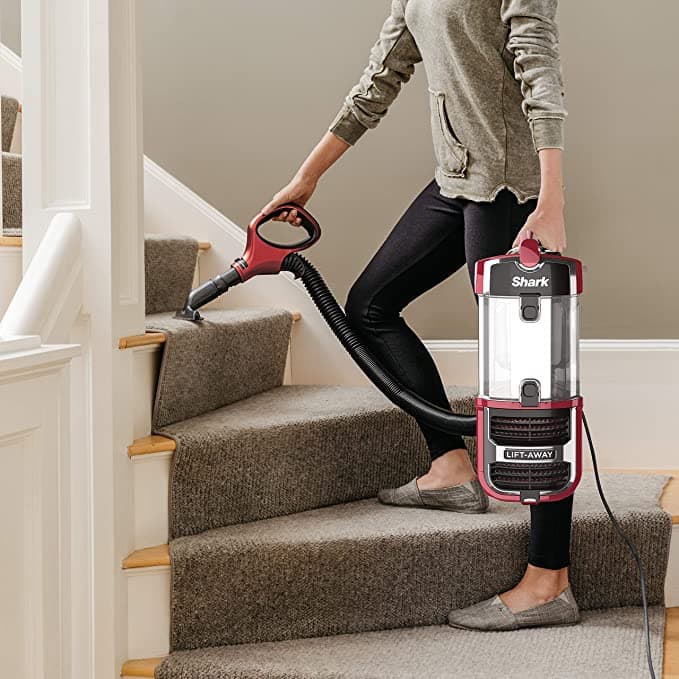
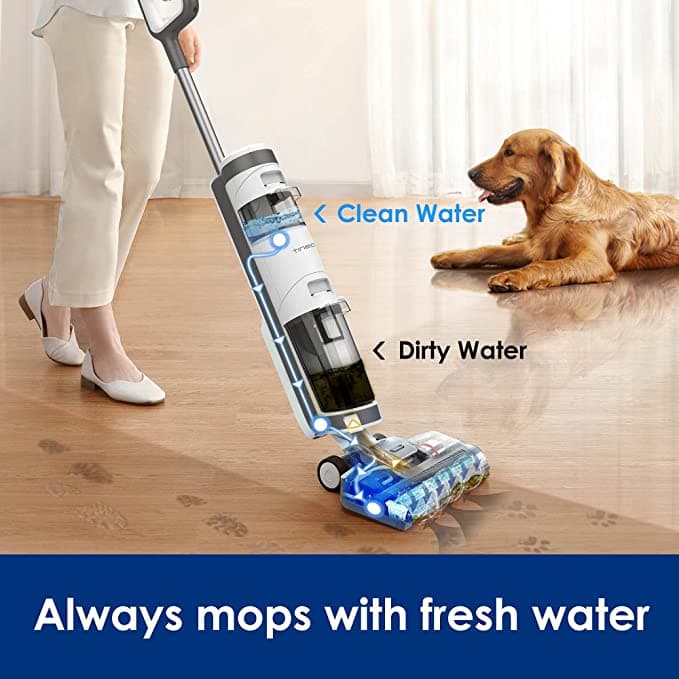
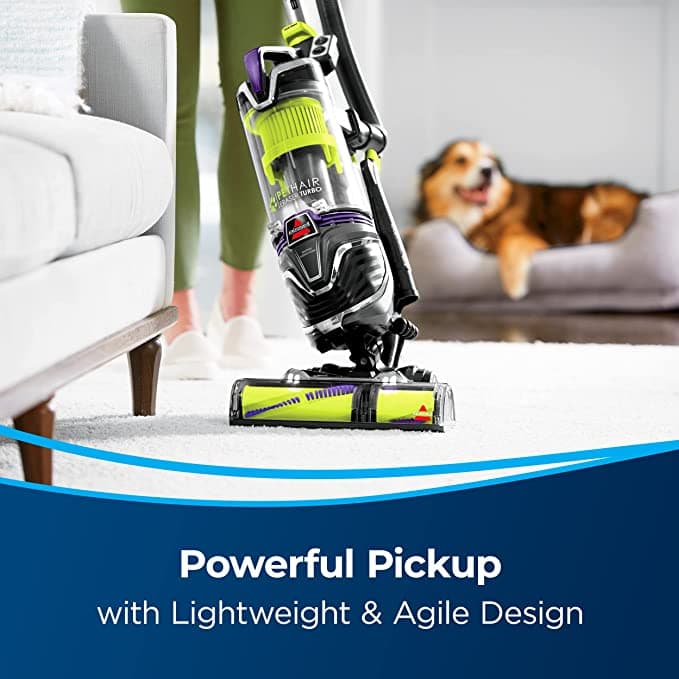
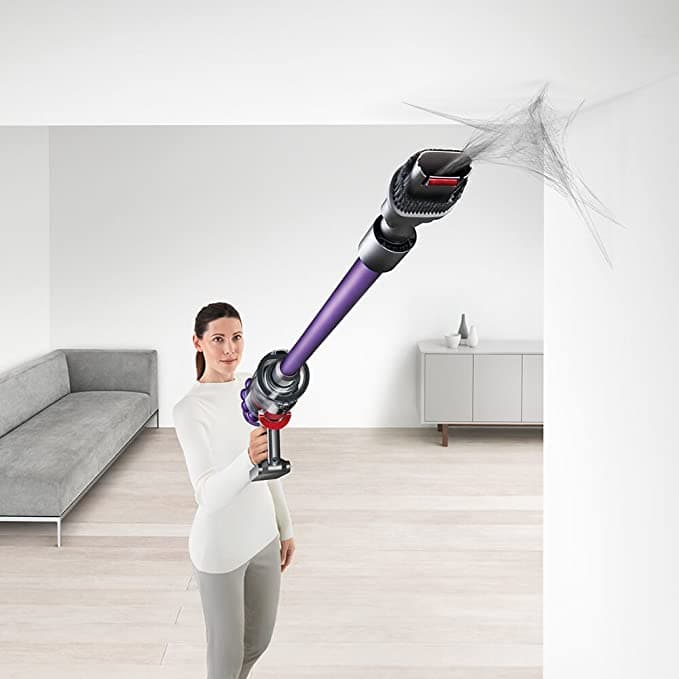
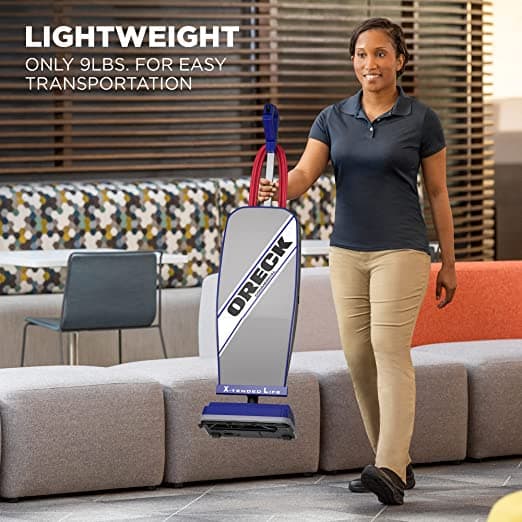

I have a Dyson Animal Ball and a Roomba 966 or something like that. The mix is great
.
[link removed]
With the Dyson I clean the filter every few times. I mainly do it bc the Roomba is the light touch and the Dyson is used for deeper cleans. We use carpet powder before due to pets etc. I also have 2 whole sets of a Dyson filters so I give them weeks to dry out. I don’t like leaving a vacuum without a filter
Awesome! No words. You always go one step beyond.
There is so much great, useful information here. Thank you! Thank you! Thank you!
Read our guide if you wish.
[link removed]
Thanks again 🙂
Request for future vacuum test comparisons – How do they compare about noise? Thanks in advance. 🙂
I’ll have to keep that in my mind! I’ve never considered noise when vacuuming! Any particular reason? Not to disturb other people while you’re vacuuming or to avoid a headache yourself?
I have the Dyson Ball animal vacuum cleaner. Do attachments for that work for the Dyson cordless stick vacuum?
Probably not. I can’t say for 100% certain (and it would depend on the exact models) but Dyson is known to make changes to the attachment connections even on the same type of vacuum but newer models. The cynical part of me thinks its a way to get you to buy new parts, but maybe it’s just new engineering 🙂
The pictures I’ve seen don’t really show how the charger base gets power? Does it simply plug into an outlet itself? Or is there a cord that is a few feet long? I’m trying to decide, if I get one, where I would put the charger base. Not all receptacles are easily accessible. And if there’s a receptacle near the floor, it looks as if the base wouldn’t fit close to the floor, for obvious reasons.
Good question — it’s base/’docking station’ has a cord (about 5ft) that plugs into the wall, so it gives you a little freedom one where you put the base.
Can the soft brush cleaner head that comes with the V7 absolute be used on the V7 Motörhead? I would love to use both if I can.nthanks!
Yes it can, and you bring up a good point: all extra attachments that come standard with one version (motorhead, absolute, etc) can be used in the versions that don’t come with it. So if you see a good deal on one version but it doesn’t have an attachment you like, you can buy the attachment separately. The only difference in the versions is the accessories they come with.
thank you so much for this extremely thorough review!!! SO HELPFUL!
Appreciate it!
Wow! Thanks! It’s nice to read an article that explains so well the differences in the vacuums. It really helped me with my decision.
Glad it helped!
Thanks for all the info. I’m wondering if all the Dyson’s work with a trigger that you have to hold down the whole time or if any run continuously once pressed? (Arthritis in hands an issue.)
All the Dyson V-series you have to hold down the trigger continuously. You might check out my article on best vacuums for arthritis. The top pick there has an on-off button that you don’t have to hold on. But you’ll notice the Dyson V7 is also on the list. I think it’s very easy to maneuver and lightweight despite the hold down button.
What’s the best Dyson cord-less stick vacuum for hardwood looking plank TILE floors? Minimal short carpet in the house.
Unless money is no issue, I’d probably go with the V7 (if money isn’t an issue, go with the V10–it’s the top version). However, most of it will depend on the size of your house. I think the V7 will give you more than adequate cleaning power for your tile planks, but the bigger question will be how much runtime you want before a recharge. I’d read my review of the V7 vs V8 above, and maybe the V7 vs V6
Awesome article . Super clear and thorough. Thanks !
Glad you liked it!
Thank you for doing such a great job explaining the difference between the Dyson cordless vacuums. I was feeling very confused!
No problem! I still get confused sometimes, especially when you get into the different models of each v6, v7, v8, v10! 🙂
Dyson website has an exclusive V7 HEPA listed for 289.99.
Thanks for the update! Just checked it out–looks like it’s brand new and as you said only on dyson.com. Now they have at least one HEPA in each series. We’ll see if they release this one outside of dyson.com in the future.
Also, Absolutes have HEPA filtration.
thanks… added more on HEPA to the article to point this out
Hi , i am using dyson v6 and i love it and i want to see the next V8 so i am very excited to try dyson v8 and by the way thank you so much for writing about the features
No problem.. glad you found it useful
You do know the shark ion dual clean comes in a cordless right? Review that and compare to the dysons great review by the way now I know the differences between the dyson sticks.
Thanks… glad you got good use out of the Dyson part. I haven’t had a chance to use the Shark cordless yet but good point–I should compare it. I want to actually use one before comparing the two, so I’ll have to get my hands on the cordless Shark soon. Stay tuned.
Great review, THANK YOU VERY MUCH!
No problem, Patty… Glad you found it useful.